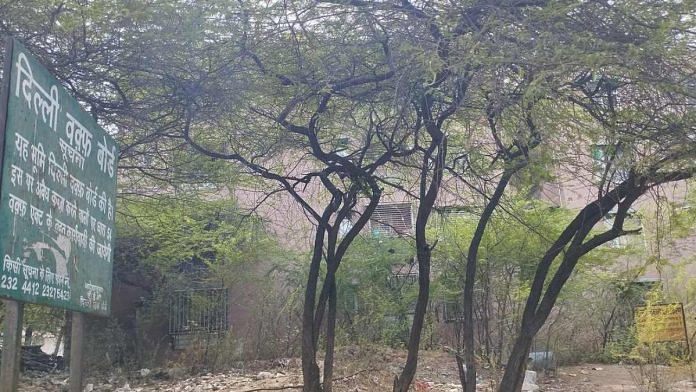New Delhi: Even as the Joint Parliamentary Committee is reviewing the Waqf (Amendment) Bill, 2024 aimed at streamlining the functioning of waqf boards, the Union Ministry of Minority Affairs has engaged Indian Institute of Technology Delhi (IIT Delhi) in assessing and suggesting ways to streamline management of properties by waqf boards in 22 states, ThePrint has learnt.
The ministry has tasked IIT-Delhi’s Department of Management Studies to study the functioning of Centre’s Waqf Management System of India (WAMSI) and to prepare a roadmap for the systematic functioning of the boards across states, a senior ministry official said.
The institute has been asked to submit individual reports for 22 states, including Uttar Pradesh, Karnataka, Kerala and Madhya Pradesh, within six months.
According to sources in the ministry, a need was felt to assess the functioning of the WAMSI portal as several states are unable to provide accurate information about waqf properties. It is also learnt that several Members of Parliament have raised questions during the JPC meetings regarding registration of waqf properties and encroachment, among others.
Last year, the ministry had written to all state governments seeking the data. “But it was found that most states are unable to provide the exact information about waqf properties. There were discrepancies found in the information provided by the states on the WAMSI portal. This is why we have decided to get a study done by IIT Delhi to assess the gaps in record-keeping of these properties and their management,” the ministry official said.
All waqf properties have to be registered with the state waqf boards in accordance with the provisions in the Waqf Act of 1995. The Act provides for a waqf tribunal for dispute resolution. While registering an immovable waqf property (land or building), the state waqf board has to maintain the details about its location, area, and the purpose for which it has been given to waqf, among other details.
The WAMSI portal was launched in 2010 to maintain a centralised record of waqf properties registered with state boards and their current status. The portal is updated on a monthly basis by the boards.
Till December last year, information about 8,72,352 immovable and 16,713 movable waqf properties was provided by states and Union Territories on the portal, according to the ministry’s response to a question in the Lok Sabha.
A senior official told ThePrint, “While state waqf boards are providing the data, there is no way to authenticate it.”
The team at IIT Delhi has been asked to check the authenticity of the data provided by state boards on the portal about registration, litigation, encroachment, etc.
“They will also check if land details, such as area and location, of the properties are maintained properly in the records, and if necessary changes have been made in the revenue record. They will also see if the properties are being used for the purpose for which they were given to waqf. We have asked them to prepare separate reports for each state so that we can point out the issues to the respective boards,” the official said.
The ministry plans to revamp the WAMSI portal based on the recommendations of the team.
Previous recommendations to revamp the portal
In 2021, in its report titled ‘Evaluation Study of the Scheme of Qaumi Waqf Board Taraqqiati Scheme (QWBTS) and Shahari Waqf Sampatti Vikas Yojana (SWSVY)’, IIT Delhi had recommended a series of changes in the WAMSI portal to make it more user-friendly and ensure accuracy of data entered by states.
The QWBTS, launched in 2009, is aimed at computerisation of records of state waqf boards (SWBs) and strengthening the boards. The SWSVY, launched in 2017, is aimed at protecting vacant Waqf properties (immovable) from encroachment, providing funds for development of economically viable projects in these properties and generating more income to fund welfare activities, according to the ministry’s website.
The report had recommended measures to improve waqf property records, including verification by revenue officials, in addition to a scheme along the lines of Survey of Villages and Mapping with Improvised Technology in Village Areas (SVAMITVA) and mapping of waqf properties.
The SVAMITVA scheme is being implemented by the Union Panchayati Raj Ministry to issue property cards to inhabited areas in villages.
Referring to the scheme, the report had said that based on the information provided by the revenue office, property cards can be generated for waqf properties, which will have a “unique identity number, size of the property, type of the property, directional location of the property and ownership chain of the property”.
It added that technology, like drones, can be used in mapping and survey of the properties to create “accurate land records of every Waqf property in India”.
Also Read: How Centre’s NAKSHA scheme will overhaul outdated urban land records, with drones & digital maps







This is idiotic politics at it’s extreme.
The Waqf Board must be dissolved with immediate effect and all it’s properties transferred to the Union govt.
The very existence of the Waqf Board is an abomination and an insult to the millions of adherents of other faiths in India.